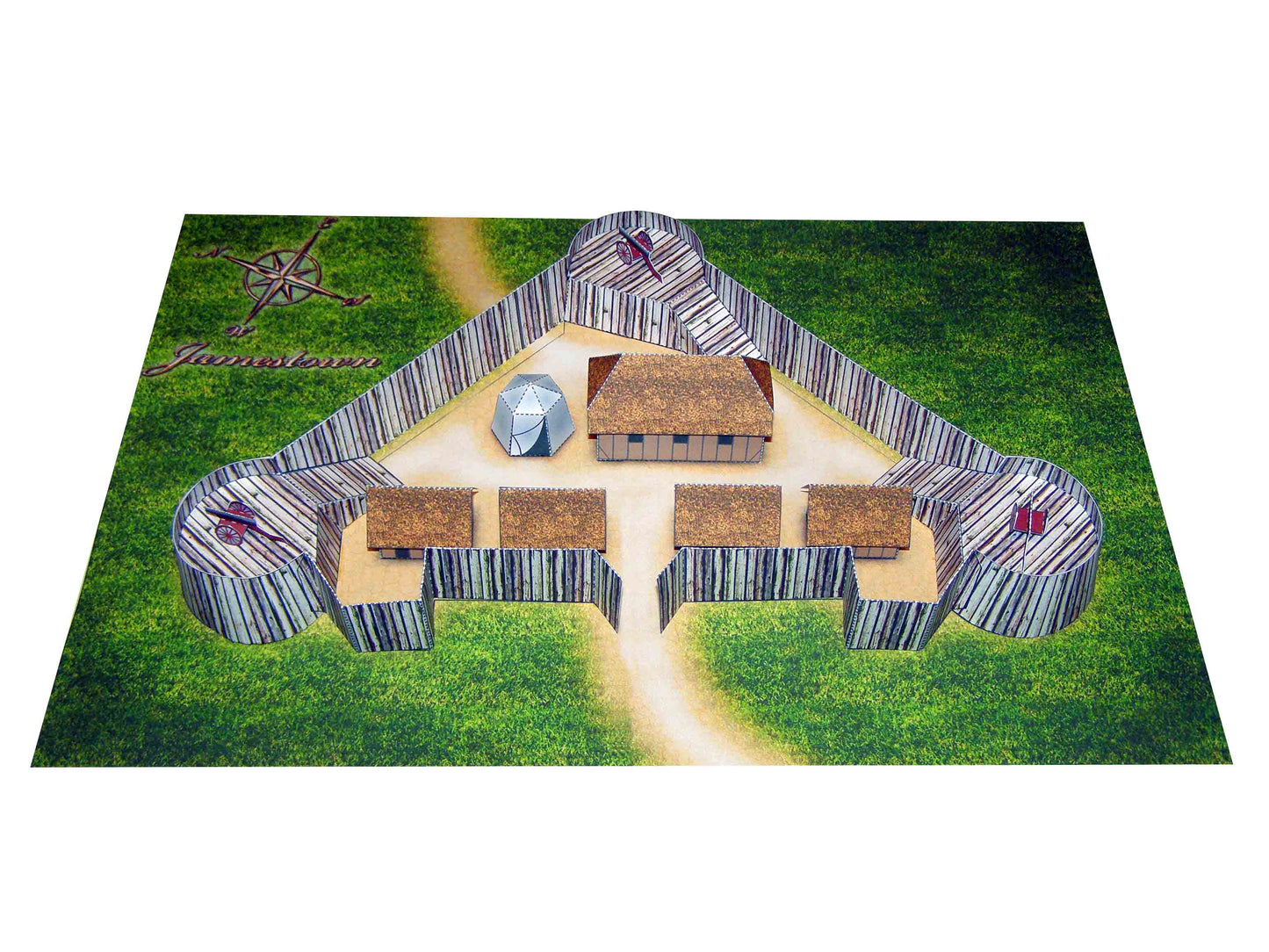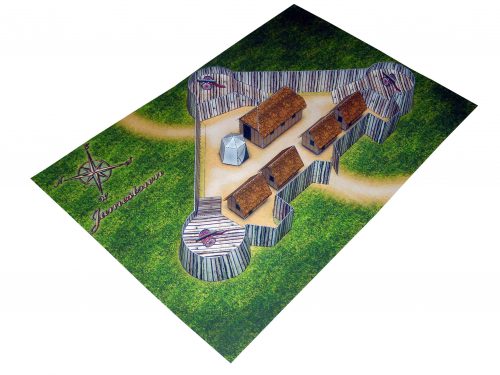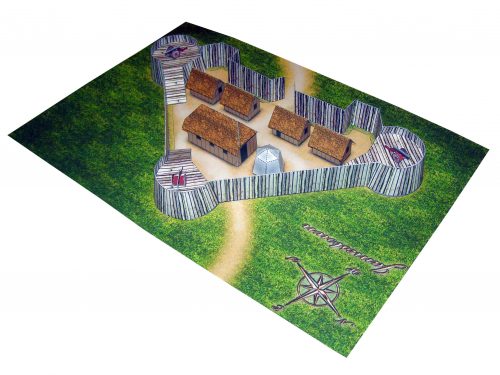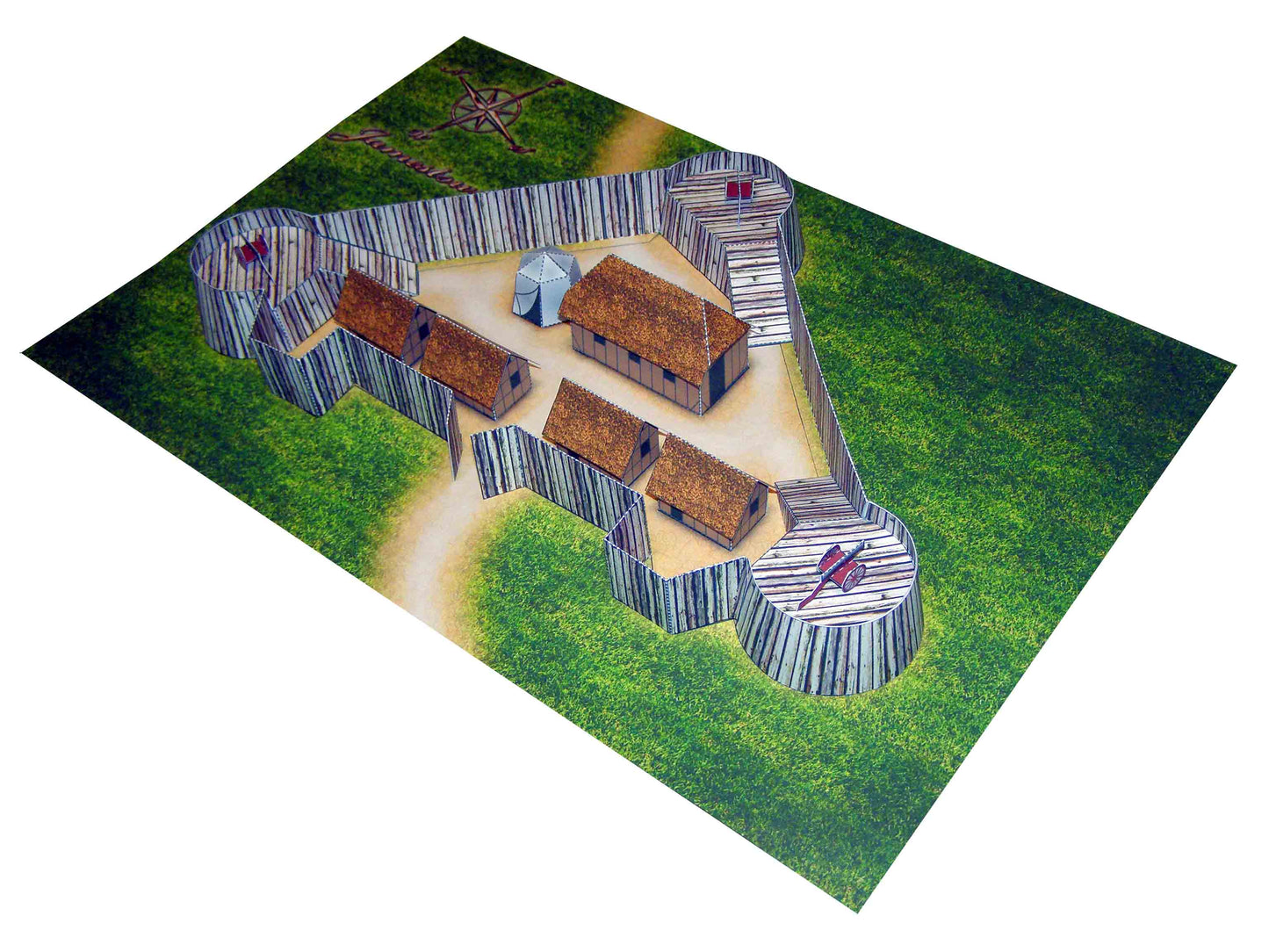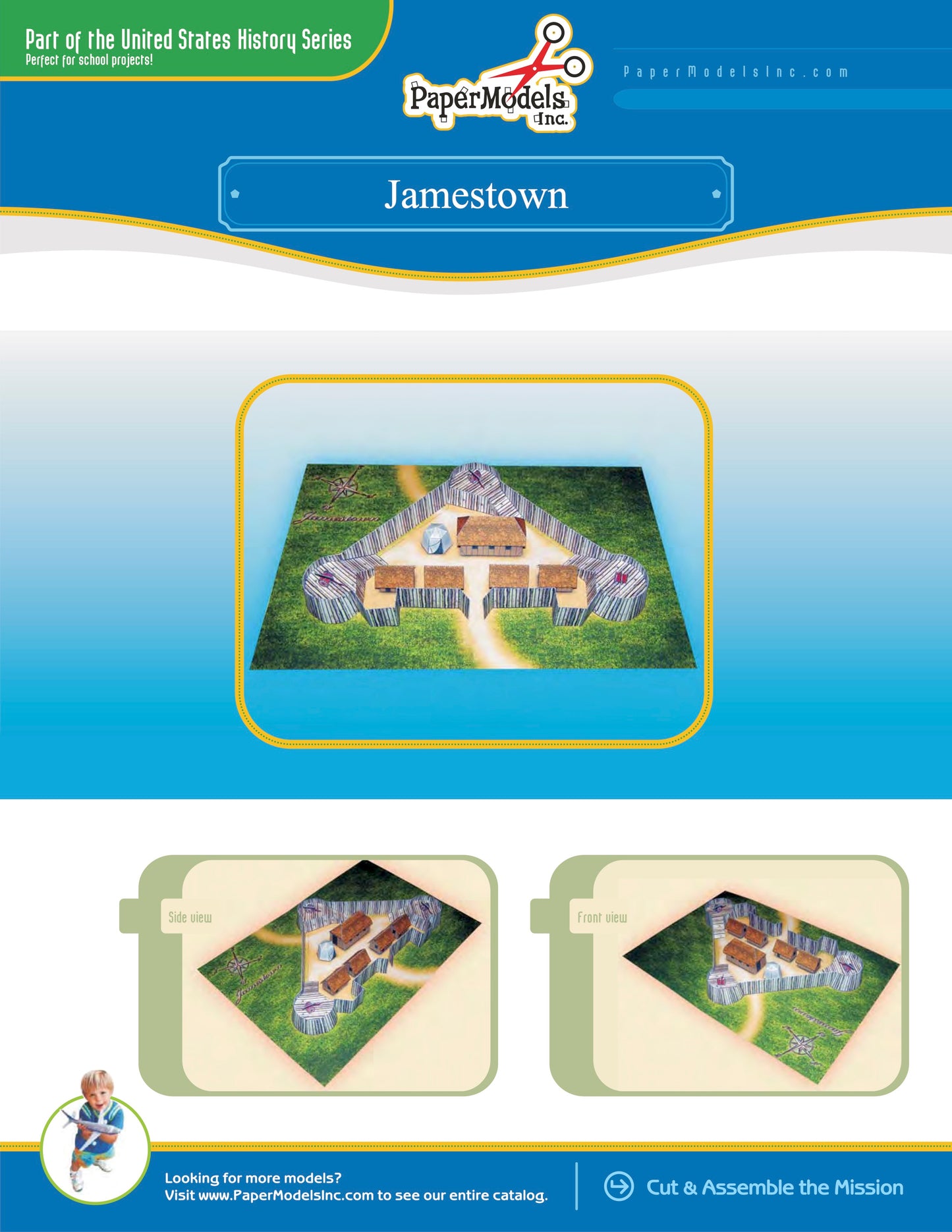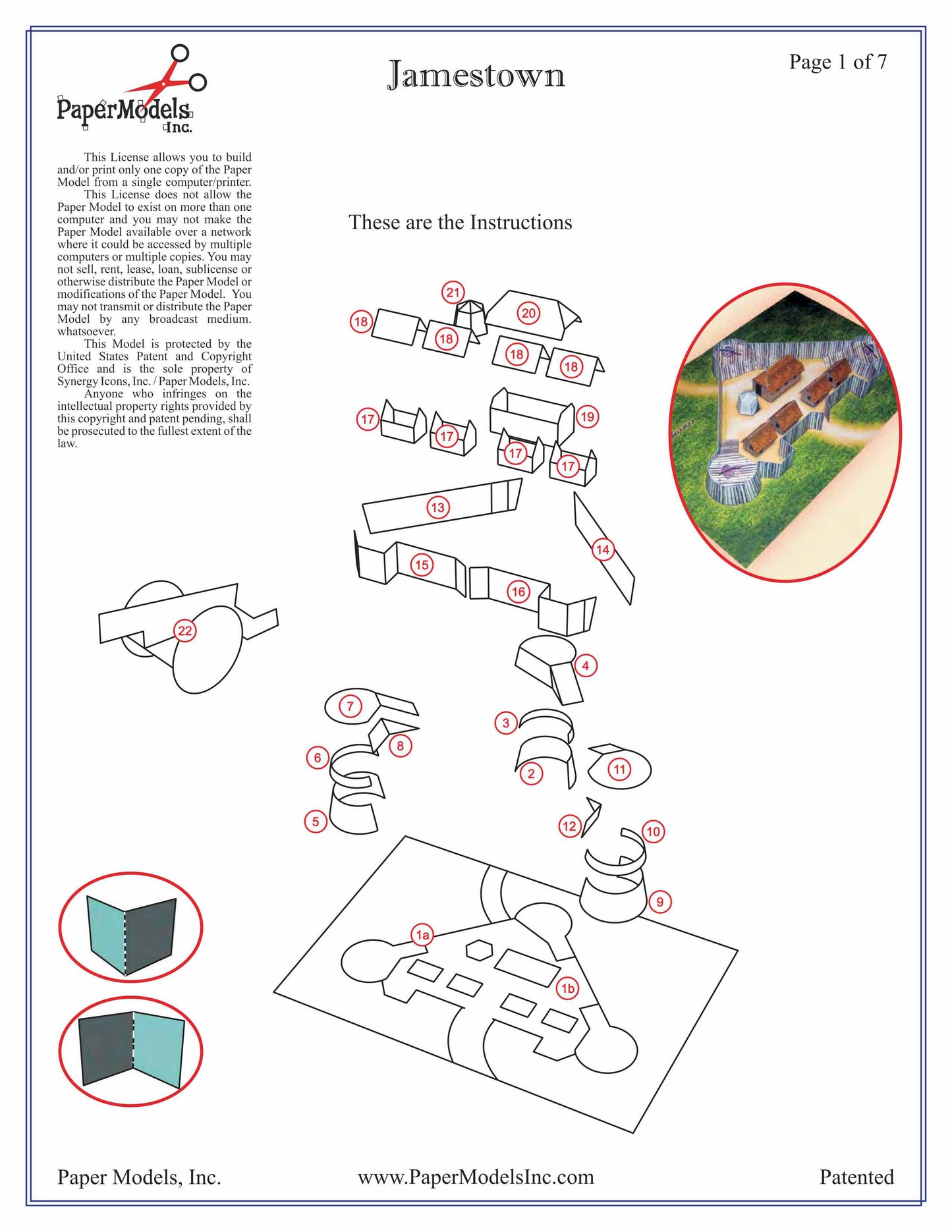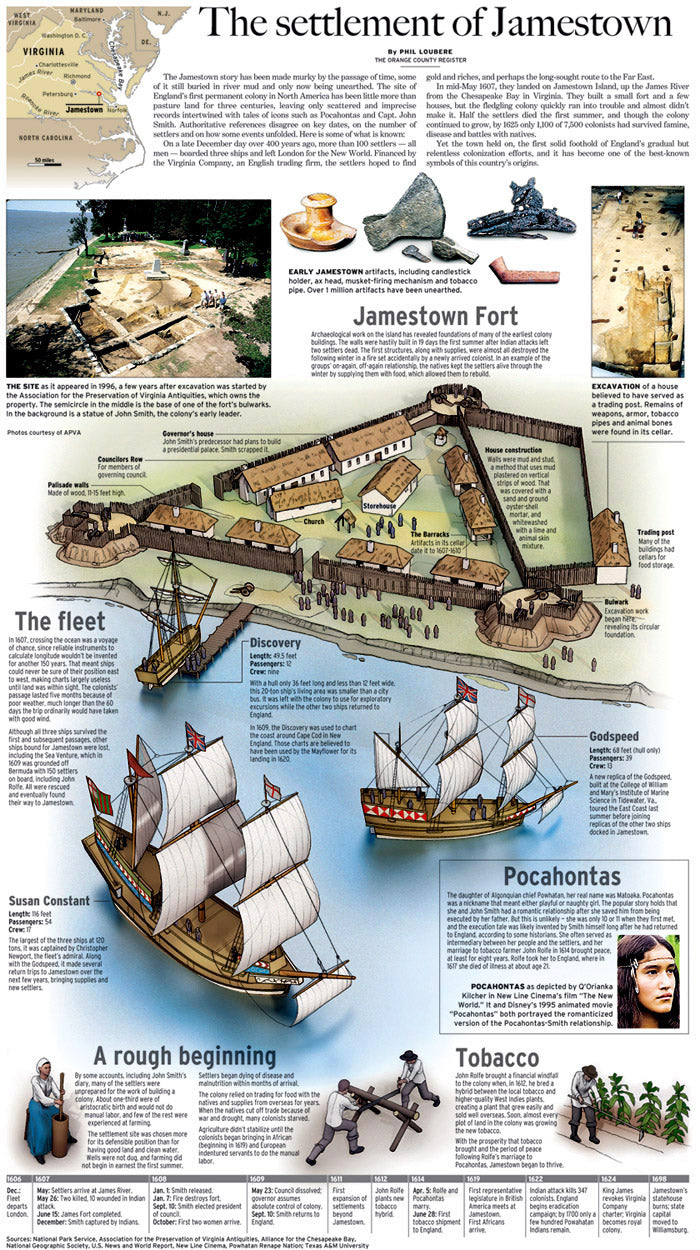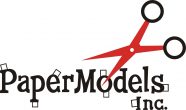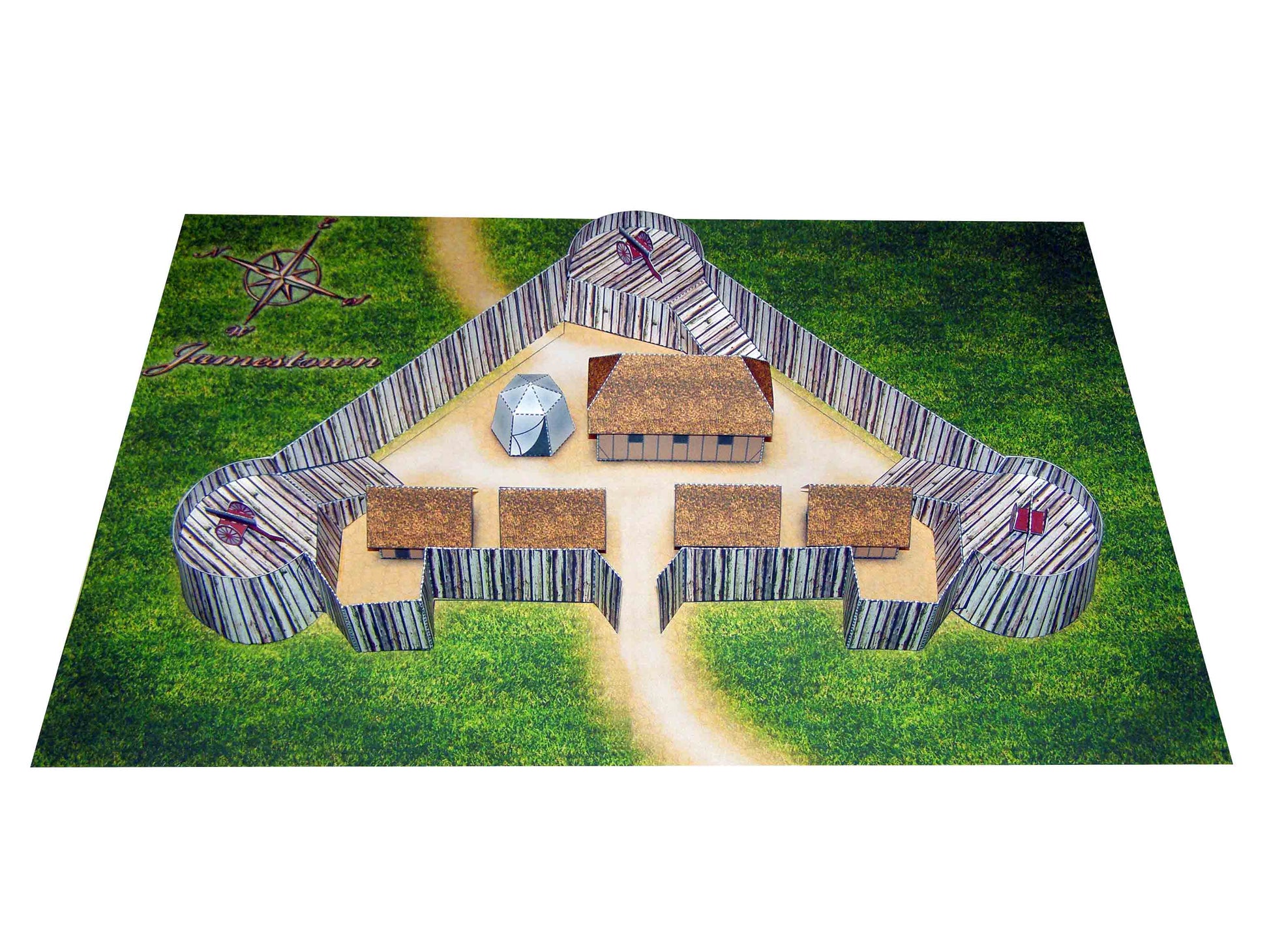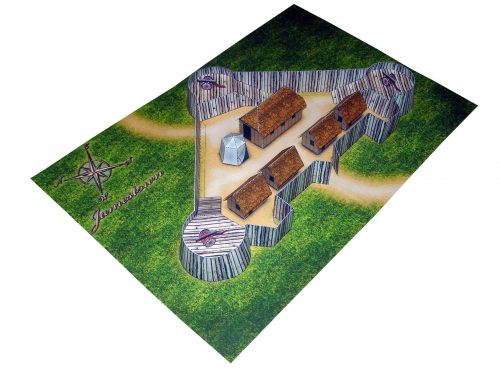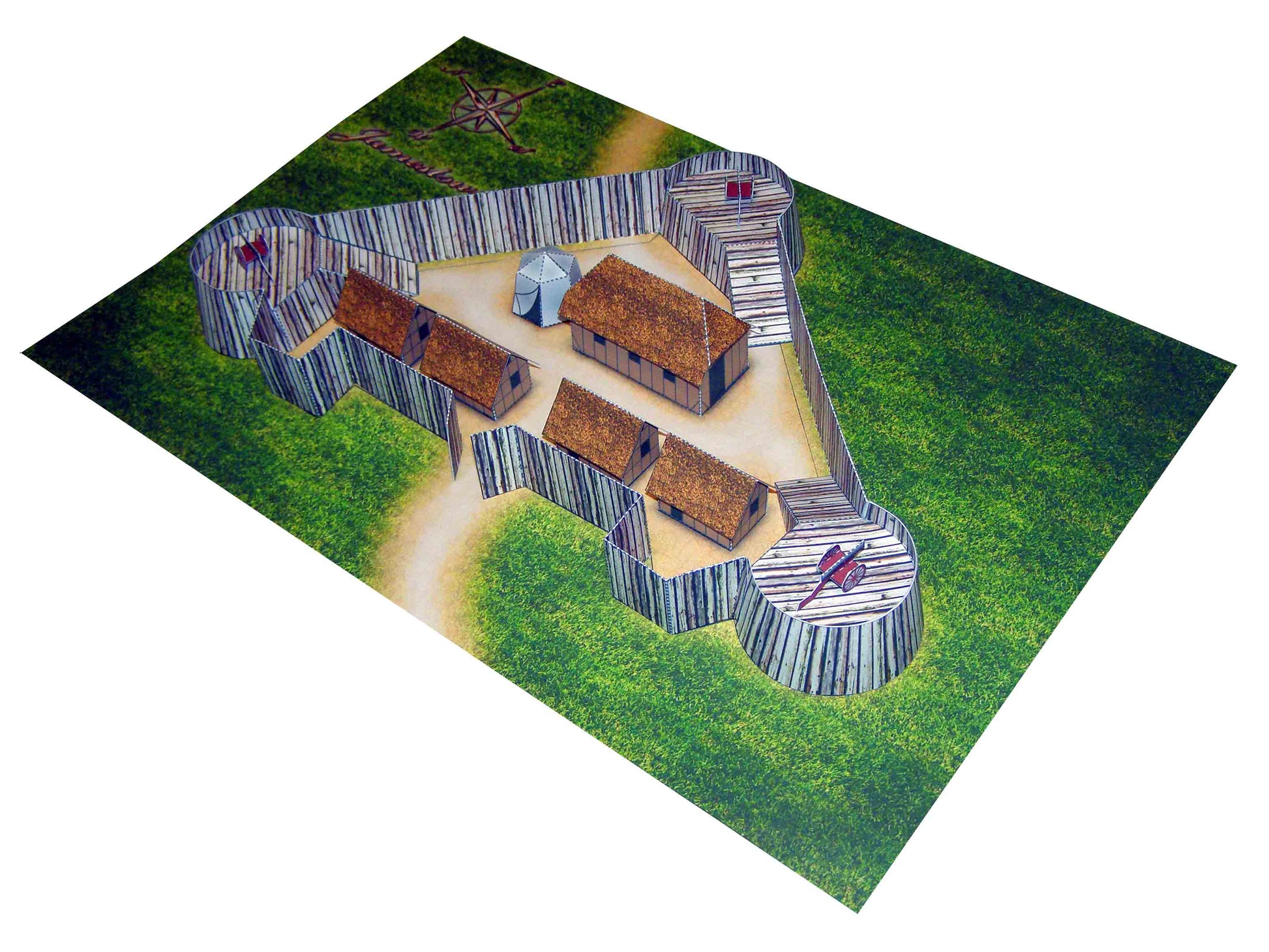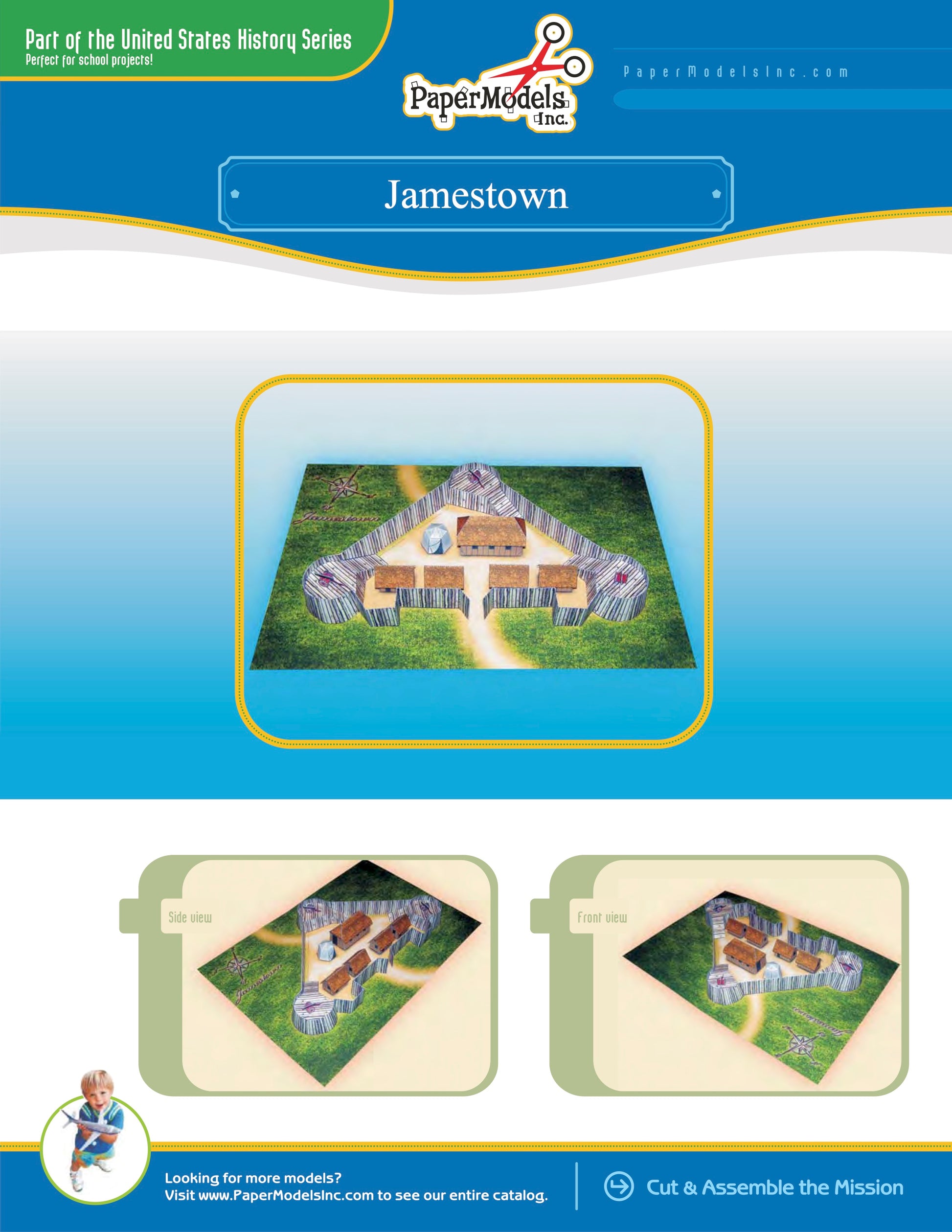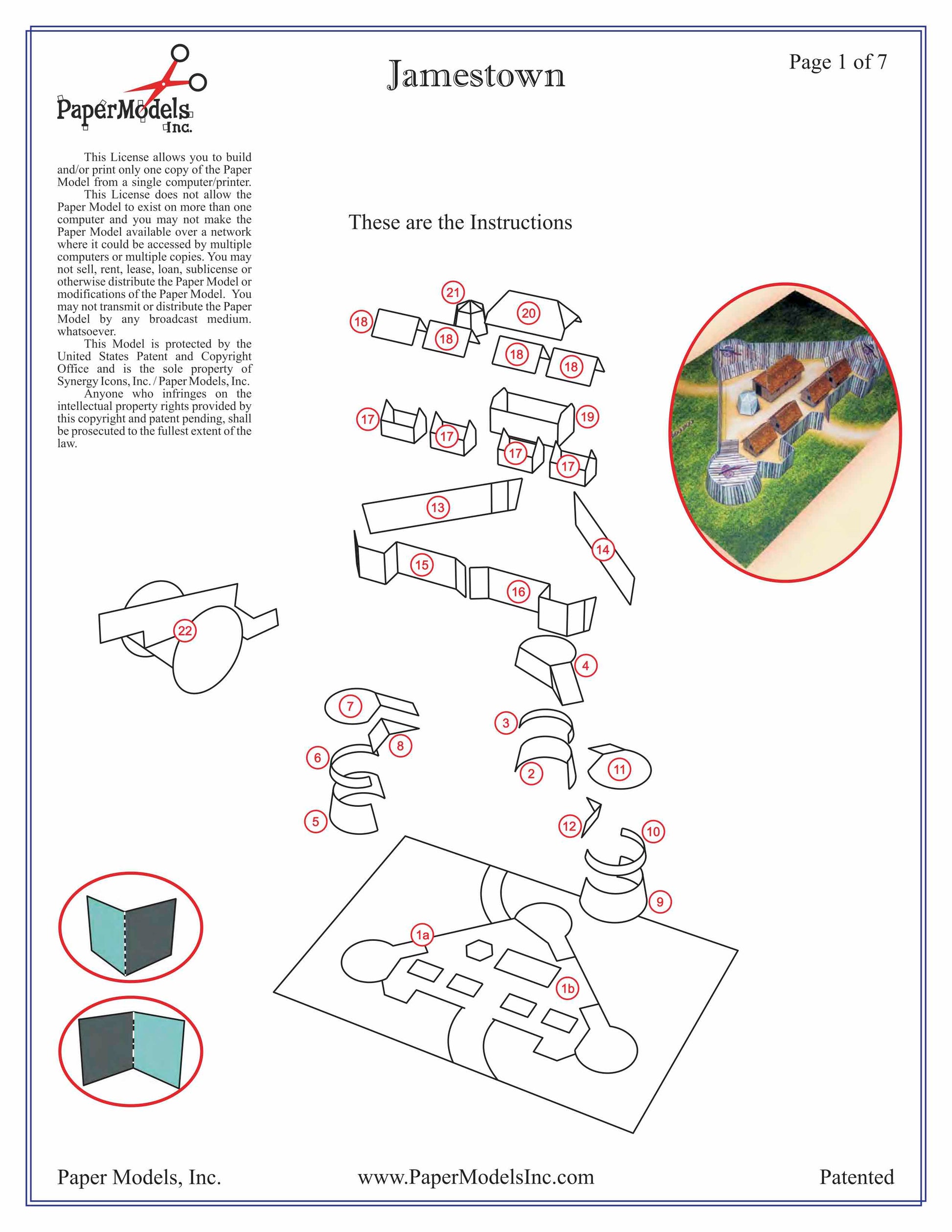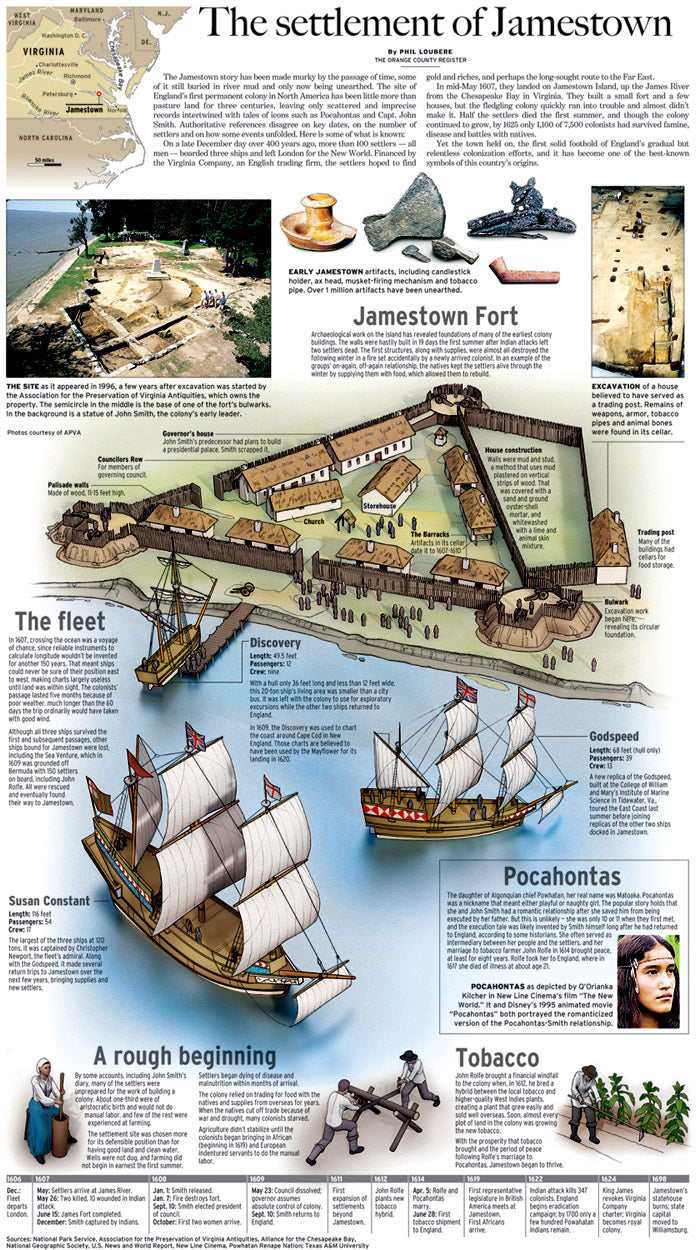Jamestown Settlement - Paper Model Project Kit
Jamestown Settlement - Paper Model Project Kit
No se pudo cargar la disponibilidad de retiro
🌟 Welcome to Paper Models Online – Your Shortcut to Academic Excellence! 🌟
Are you tired of stressing over last-minute school projects? Look no further! Paper Models Online is here to make your academic life a breeze.
🚀 Why Choose Us?
At Paper Models Online, we understand the pressure of looming deadlines and the desire for that coveted "A" grade. That's why we've crafted the perfect solution for you! Whether you're a student aiming for extra credit, a parent looking for quality time with your kids, or just someone in need of a break from the chaos, our paper models are your ticket to success!
💻 Instant PDF Download OR Pre-Printed & Shipped
You're in control! Choose from our instant PDF download, starting at just $9.95 for the 7"x10" size or $11.95 for the 10"x13" size.
Print it on your home or office printer using regular paper, or opt for the hassle-free pre-printed option. We'll ship it directly to your doorstep for a flat $5 fee via USPS First-Class Parcel, ensuring you get it in 1-3 days!
✂️ Easy Assembly, Maximum Impact
With just a pair of scissors, some glue, and an hour of your time, you can turn these paper sheets into stunning three-dimensional architectural replicas or complete science projects. The images on our website are real models made from our kits, and we even provide a history to help you craft an impressive report.
🎨 Unleash Your Creativity
Not into mission kits? No worries! Our models double as templates for your creative genius. Paint, trace, adjust sizes—your imagination is the only limit! Create a custom masterpiece that reflects your unique style and personality.
🛒 The Buying Process Made Simple
- Choose Your Size: 7"x10" or 10"x13"
- Choose Your Delivery: Instant PDF download or pre-printed and shipped
- Purchase Your Model: It's that easy!

📦 Typical Kit Sample
Each kit includes 8 to 18 pages, providing everything you need to bring the model to life. An "exploded view" guides you through assembly, and a complimentary history adds that extra touch for your report. Impress your teacher not just with creativity but also with your research skills!
 |
 |
 |
| Exploded View | Sample Pieces | Finished Model |
Free History For Your Report
Jamestown Settlement
Jamestown, located in Virginia, was the first successful, permanent North American settlement of the English, following seventeen other unsuccessful European colonization attempts. Only one successful European settlement predated Jamestown, the settlement of St. Augustine, Florida, founded by the Spanish in 1565. The story of Jamestown begins in England, circa 1606, when Captain Christopher Newport led the Susan Constant, The Discovery, and The Godspeed on a charter to the New World commissioned by The Virginia Company of London. The first landing in the New World by this expedition occurred in April 1607 at Cape Henry. Further exploration was then made of areas around Chesapeake Bay, and a river that was discovered was names James River, in honor of James I of England.
As the exploration continued, Jamestown Island was founded 40 miles inland from the Atlantic on the James River, by Captain Edward Maria Wingfield. This was chosen as a prime location for the English settlement by Wingfield on May 14, 1607. Even though Jamestown Island was free of population by the surrounding Native American tribes, the swampy land on the island was troubled with unsuitable drinking water and insect problems, including mosquitoes. Contrary to popular belief, the Native American tribes surrounding Jamestown Island and the bay area were not one closely-net unit, but rather individual tribes with self-governing policies and methods of living. A leader of one of the tribes, Chief Powhatan, was desiring to assist the settlers, and to join forces with them, so they could work to gain the tools and advancements of other nearby tribes. However, the poor treatment of the Natives by the English became more pronounced, and the English justified their behavior by pointing out that the Natives were pagans, not Christians. Over time, Powhatan discovered the intents by the English to overtake the Natives, which resulted in a war, that ended only when Chief Powhatan agreed to a peace treaty after the kidnapping of his daughter, Pocahontas.
The following five years saw the death of many colonists from disease, along with the arrival of more colonists and settlement “experts” from other European countries. Many more deaths continued under the leadership of Captain John Smith; when Smith was forced to return to England, leadership was handed over to George Percy. Percy was unable to successfully manage the tribe or communicate with the Natives regarding food and other important supplies, resulting in the death of over 80% of the population from starvation.
Things began to turn around for the Jamestown settlement on June 10, 1610, a day that became known as “The Day of Providence.” On this day Lord De La Warr arrived to the settlement aboard The Deliverance, bringing supplies and settlers to the area. Lord De La Warr's arrival convinced many colonists to stay in the New World. One of these colonists was John Rolfe, who had come to the New World to test the planting of tobacco seeds, but had yet to follow through with his plans. When he remained, he tested the tobacco seeds in the New World's soil, resulting in a the explosion of a crop that would become very important to the settler's future. The tobacco crop allowed Rolfe to become wealthy, and marry Chief Powhatan's daughter, leading to peace between the two groups. This peace was short-lived, however, when Pocahontas died after being in England.
The strained relations climaxed on March 22, 1622, in an event that became known as The Indian Massacre. Over 300 English-speakers were murdered and two advanced outposts – one of which was to include a college – were destroyed. Jamestown was also supposed to be destroyed, but was given a short warning, allowing the colonists to be at the ready. Jamestown continued to grow and expand after the massacre, whilst still enduring occasional attacks from the Native tribes. In 1634, under order of King Charles I, the colony area was divided into shires, or “cities” as we know them today, and the first county of the New World was created – James City County in Virginia.
As the colonies expanded, little attention was paid to the preservation of Jamestown until 1893, when The Association for the Preservation of Virginia Antiquities stepped in to protect a portion of Jamestown Island. A seawall was built to preserve the site. Thanks to the seawall, the foundations of Fort James were discovered in 1994. The site became a major tourist attraction in 1957, when the Jamestown Festival was held by the Commonwealth of Virginia to celebrate the 350th anniversary of the founding of Jamestown. While it was not possible to display the actual site of the settlement due to land erosion and rising water levels, a nearby attraction was built as part of the festival and continues to this day. A replica of Fort James, a Native American village, and full-scale replicas of the three ships that were landed on the site can all be found today at Jamestown.
© Copyright – Paper Models, Inc. – All Rights Reserved
Share
